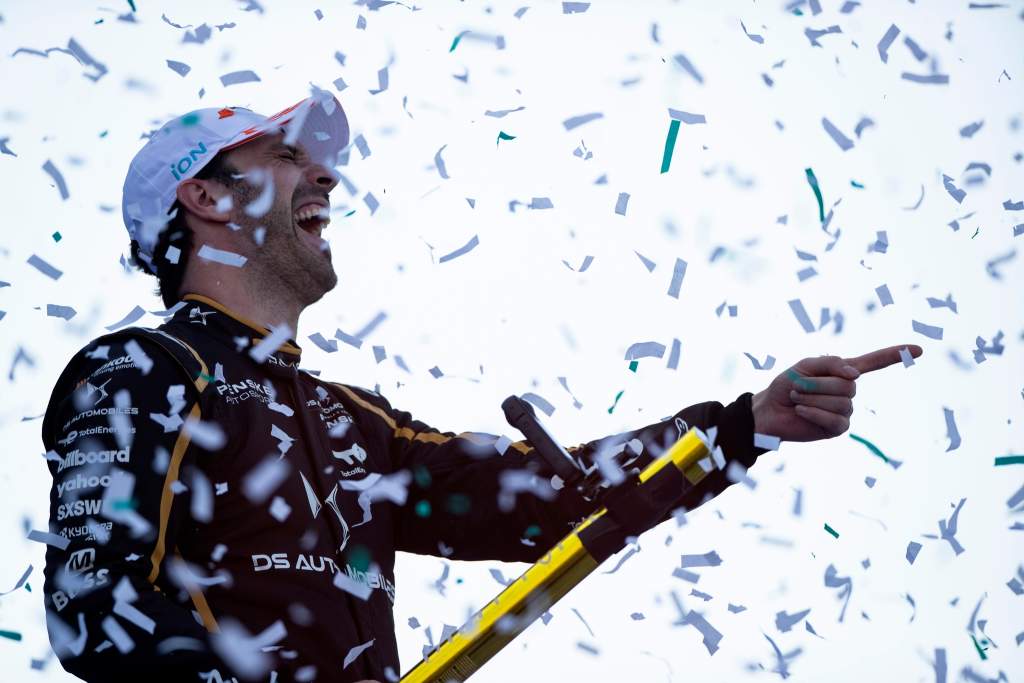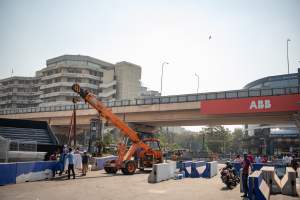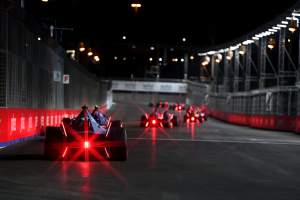When a constellation of stars is formed they align in a perceived pattern. That’s precisely what Jean-Eric Vergne and DS Penske experienced in Hyderabad last Saturday afternoon.
Some of the celestial wonder was formed by the team’s hard work, yet some, as perhaps it always does in motorsport, was kind of magical.
You could say luck was also involved but many don’t believe too much in luck, instead, they believe you rather make your own luck sometimes.
Whatever the percentage of luck, magic and judgement might have been there was no shying away from the fact that Vergne and his DS E-TENSE FE23 were a renewed force in India.
Importantly it gave hope that a lengthy period of fighting in the upper midfield might be unfounded after a poor opening to the season.
The reasons for that were numerous but one fundamental is that the black and golds appear to have an inherent vehicle dynamic disadvantage when it comes to the bumpier race tracks.
Hyderabad, for all of its on-track dust and detritus, was a quality smooth surface that had recently been re-laid. That suited the glide factor of the DS and Vergne ran with it.
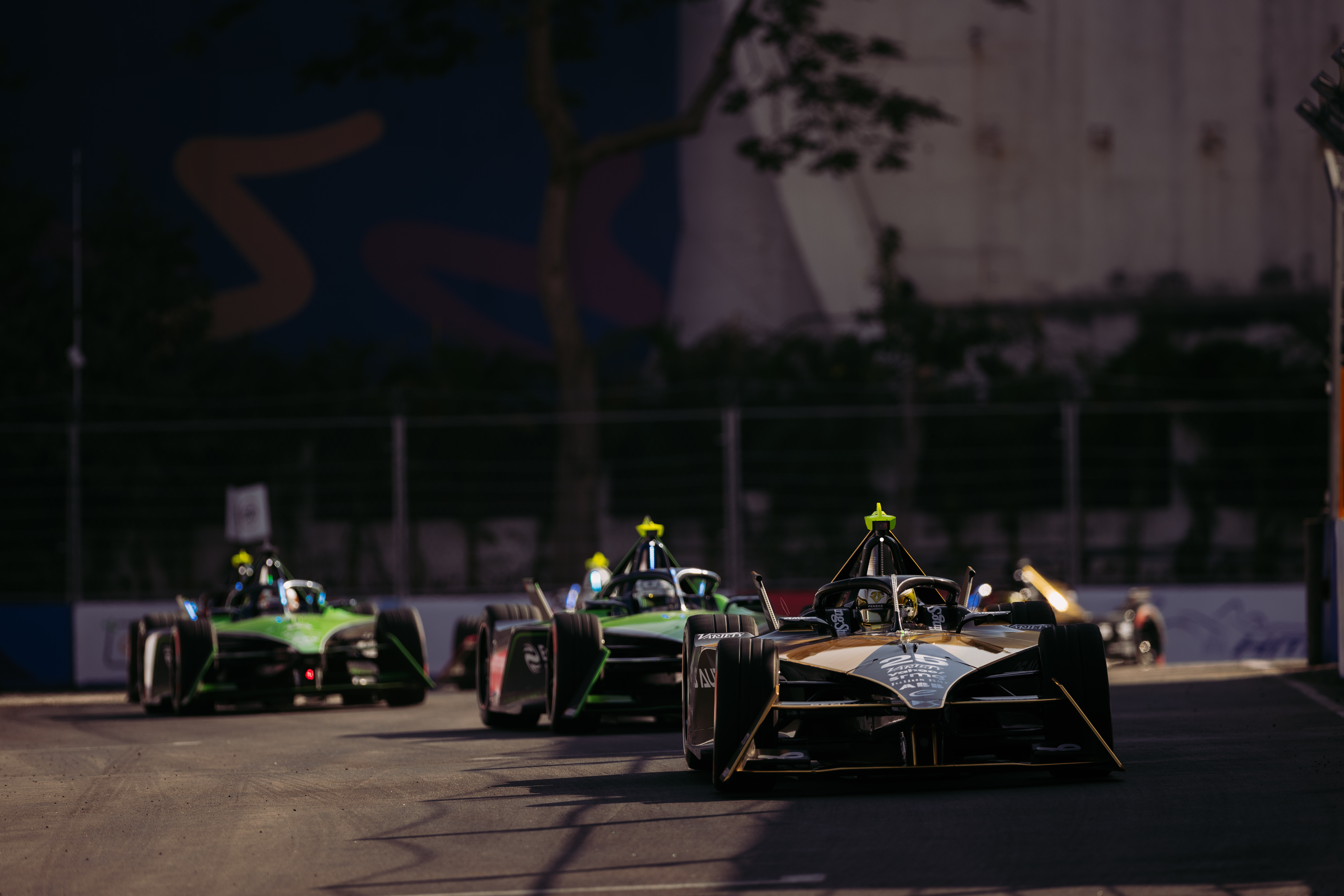
“The race was good; we haven’t made any mistakes,” Vergne said.
That he didn’t as the fired-up double champion extinguished the dim star of Riyadh to shine again in Hyderabad.
But it was no breeze. Vergne said that he was “struggling all race long with the recovery, there was something that wasn’t working properly so I had to lift very early”.
“I was struggling a lot on energy, obviously, so at some point, I really thought Nick [Cassidy] was going to pass me and I was going to be fine for it because I was struggling so much that I didn’t want to lose the position to some of the other guys behind.”
Vergne could have relinquished the lead to an energy-rich Cassidy but just as he was about to be pressured intolerably, an ethereal twist of fate dealt him an ace hand.
Back in the pack, a chaos theory was playing out. Its odds were so long that the bookies wouldn’t have taken your bet.
Earlier in the race, Jake Hughes hit a sizable piece of Edoardo Mortara’s front wing, which was shed after the Maserati MSG driver hit Cassidy at Turn 3.
This was left on the track just off-line and was eventually reduced to further component parts by several cars hitting elements of it.
When Hughes did make contact with it, the left-side mirror on the McLaren run Nissan was damaged. Later in the race, its tether flapped into the cockpit deflected off Hughes’ arm and wedged itself into the steering wheel. He crashed exiting Turn 3 unable to parry the intruding part.
The safety car was deployed and instantly another friendly star shone on Vergne’s face.
Another soon appeared on the horizon. This was brief and fleeting but was again welcomed.
Vergne, like most other drivers in the field, got slapped with a black-and-white flag warning for track limit violations. All very standard in the context of this element of the race. However, a race control typo gave him a slight respite from Cassidy’s green menace in his scanty Gen3 mirrors.
Instead of ‘black and white’ flag the wording on the official screen read ‘black flag’. Cassidy’s engineer Robert Sattler informed his charge to “just sit there, he’s out.”
Then instantly realising that it could be a typo the info was met with caution before the FIA corrected the message.
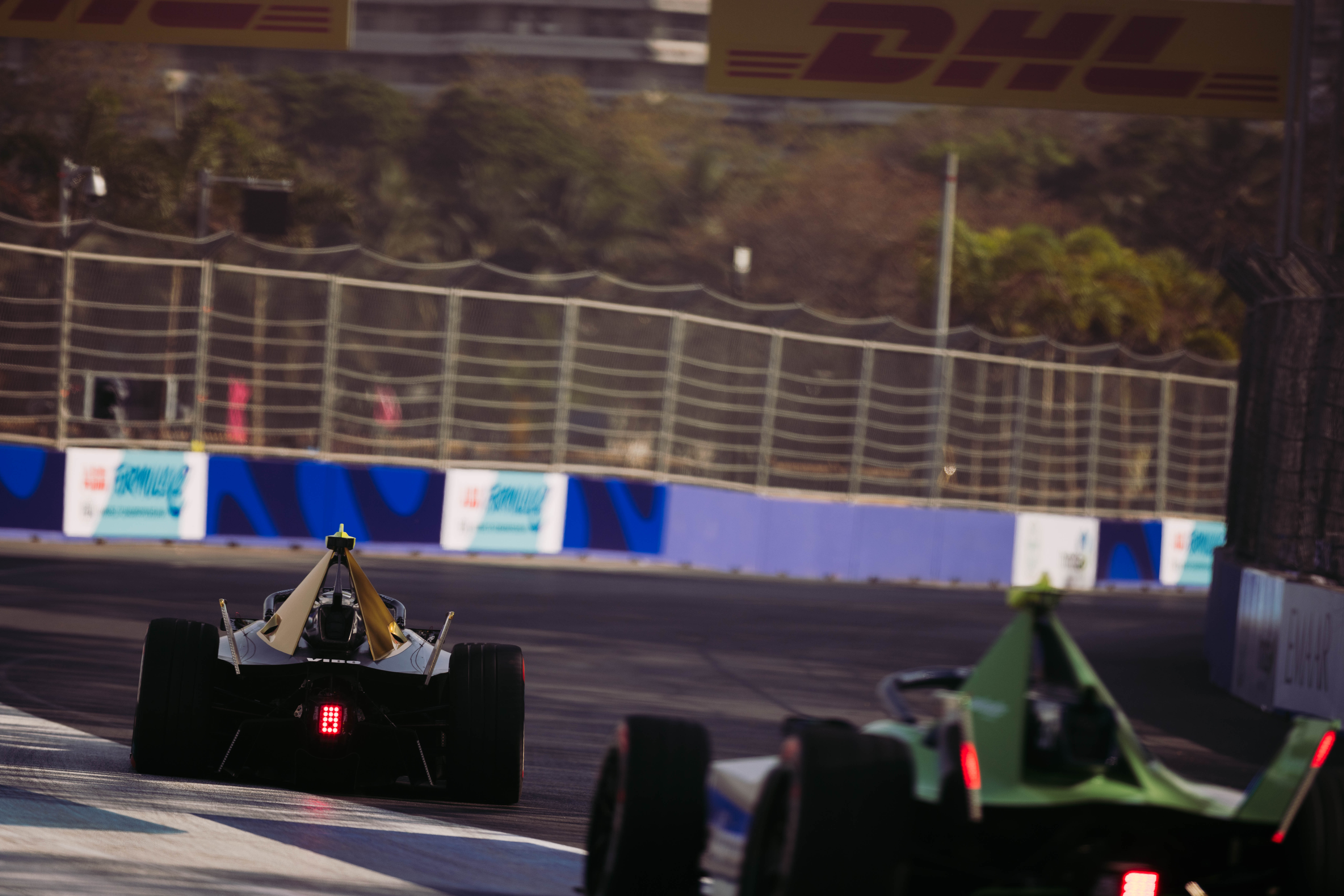
“When he got the black flag I looked at one lap and it allowed him to recover a lot into Turn 3 and I think from that point on he was quite safe to be honest on energy,” alluded Cassidy.
Again, another slice of fortune for Vergne that he was able to exploit.
But more centrally the safety car allowed him to “change a little bit my target so it became a bit easier for me although Nick still had three, four percent more energy.
“I was able to lift in some places that allowed me to block well and that’s what I’ve done until the end of the race. Was not a peaceful race for sure.”
Where there was peace was in the face of DS Penske engineering chief, Leo Thomas.
A personality that radiates calm authority, Thomas was confident that Vergne would bring home the bacon, he just needed some aviation techniques to seal it!
“JEV did a JEV at the end so we’re calling him the Boeing 747 because nobody can pass him!,” Thomas told The Race.
“He’s definitely in the VIP class.”

The marauding green army of Envision was Vergne’s biggest threat, earlier in the race when Sebastien Buemi looked the most likely challenger, and later when Cassidy became a force when freed by the Jaguar implosion.
Buemi’s missed attack mode could well have cost him a tilt at the win and the Swiss was honest regarding his error that cost him two places.
“I missed one [attack mode] so if I had not missed it, I would have been in the place of JEV basically and we would have brought home a one and two.,” Buemi told The Race.
“It’s my fault basically.”
That thrust Cassidy into the role of the man most likely to usurp Vergne and in the back of the DS Penske box Thomas realised that “Cassidy had to have a good result and he had the broken nose so probably didn’t want to take any risk or too much risk, so this was a factor as well.
“It would have been maybe somebody else he would have launched (an attack).
“Really the track that suited us more than Riyadh.
“In the end it was quite good grip, at the end of the day. The dust at the beginning was very challenging for everybody, obviously, but then it did grip up quite a lot.”
He wouldn’t be drawn on the bumpy surface issues of the DS cars but Thomas didn’t have to.
That is an area the team is working hard in to ensure that like Vergne’s Hyderabad drive, it can add some brighter stars to a possible rejuvenated constellation this season.


